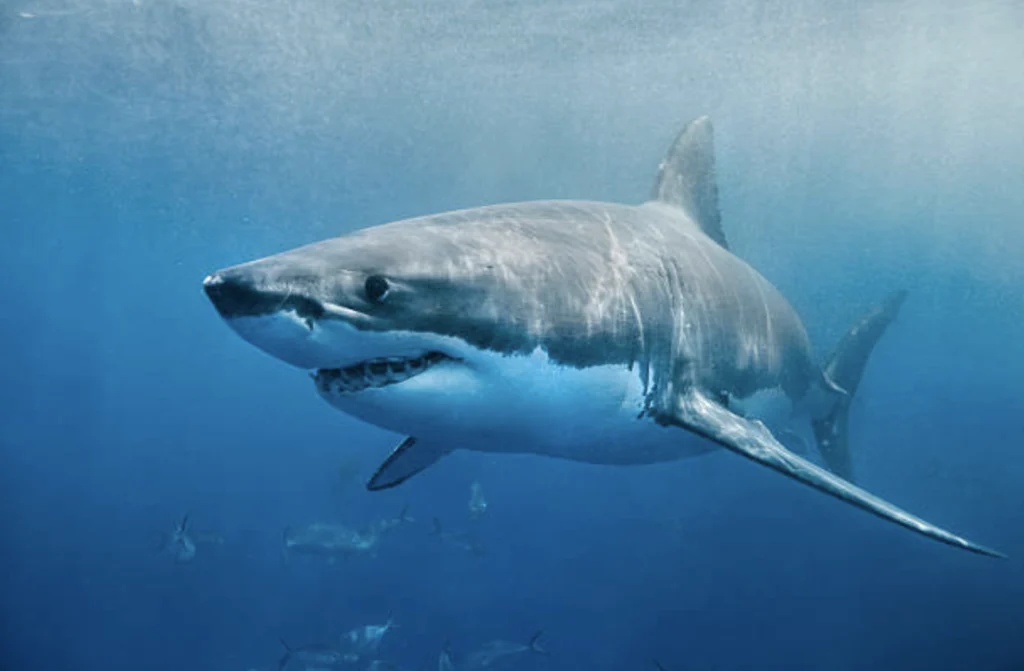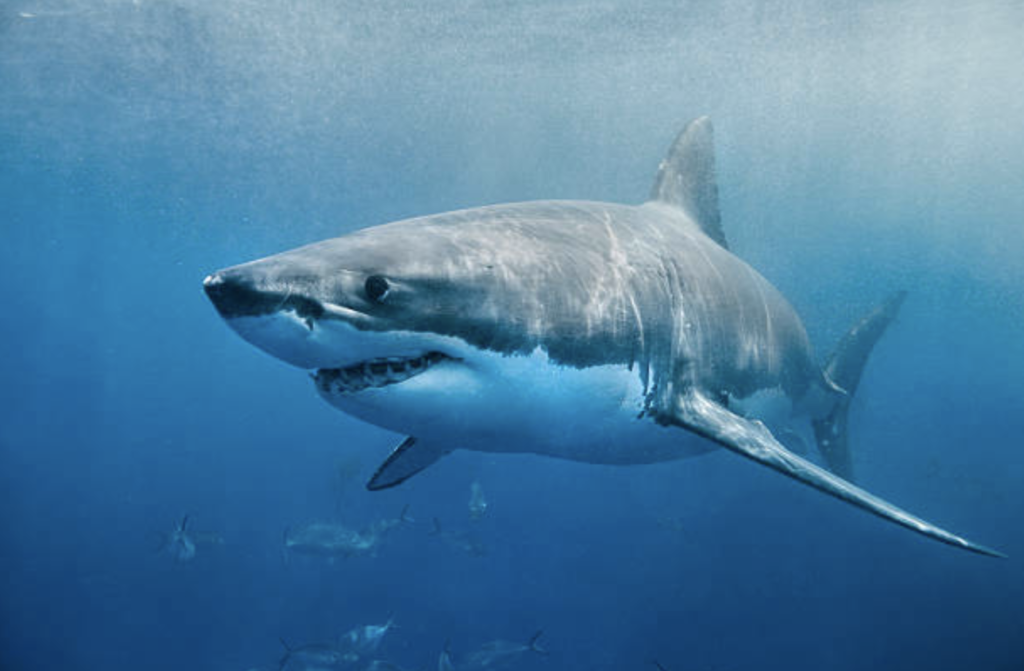Welcome to Great White Shark Diving. Have you ever wondered how it is to dive with one of the most fearsome sharks in the world? We collected where you need to go and what to expect from Great White Shark Diving.
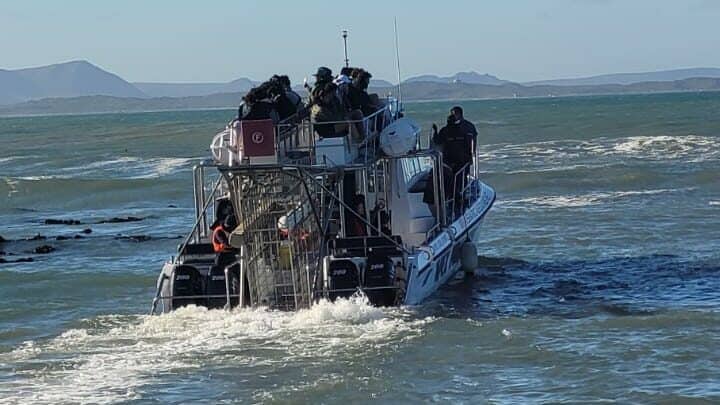
Swim Ahead by clicking on the links below:
Key Points
| Location | Notable Features | Best Time to Dive | Water Temperature | Visibility | Chance of Encounter | Diving Qualification Needed |
|---|---|---|---|---|---|---|
| Port Lincoln, Australia | Neptune Islands – Get close to Great White sharks | All year round | 10 – 25°C / 55 – 77°F | Usually 30+ meters | Higher than 70% | Not required (except for Rodney Fox) |
| Guadalupe, Mexico | Former hotspot (Closed to tourism) | – | – | – | – | – |
| Bluff, New Zealand | Former hotspot (Closed to tourism) | – | – | – | – | – |
| Gansbaai, South Africa | Three cage diving operators, high chance of encounters | Beginning of March to September | 16 – 23°C / 61 – 73°F | Usually 5+ meters | Higher than 90% | Not required |
| Mossel Bay, South Africa | Largest occurrence of Great White sharks in SA | Beginning of May to September | 16 – 23°C / 61 – 73°F | Usually 5+ meters | Higher than 90% | Not required |
| False Bay, South Africa | Shark Alley – Large numbers of Great White sharks | Beginning of May to September | 17 – 22°C / 60 – 71°F | Usually 5+ meters | Higher than 90% | Not required |
| Farallon Islands, USA | Abundance of Great White sharks in autumn | Beginning of September to November | 13 – 17°C / 55 – 63°F | Usually 10+ meters | Higher than 70% | Not required |
| Cape Cod, USA | Cape Cod – Shark hotspot of the USA | Beginning of July to mid-October | 6 – 20°C / 41 – 67°F | Usually 30+ meters | Higher than 90% | Not required |
Note: Some locations are marked as “former hotspots” because they are no longer viable spots for shark cage diving due to permanent closure
Best diving locations for Great White Sharks
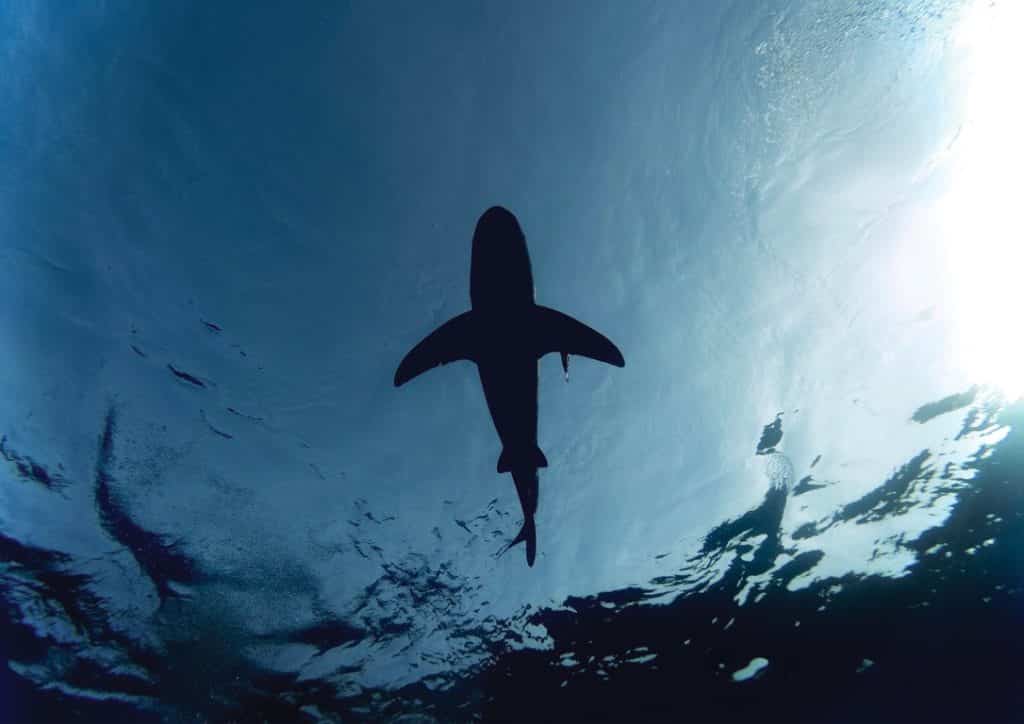
It depends on the season as encountering the giant varies.
We have put together a summary for you so that you know in which countries you can dive with the sharks with a high probability of seeing them.
Great White Shark Cage Diving
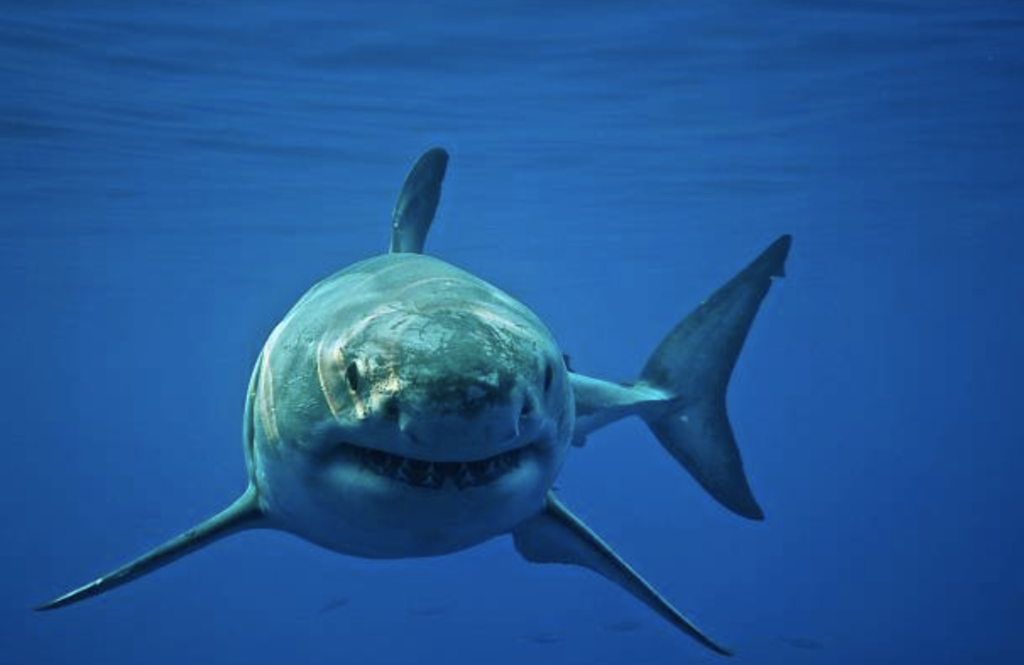
While people like Ocean Ramsey regularly dive with Great White sharks without a cage, it is not as safe as it appears and it is strongly suggested to dive with a cage as well as professional guides. This is to ensure the safety of both the diver and the animal.
Imagine gazing into the steely eyes of a great white shark, its power and grace just inches from your protected perch. This thrilling experience, pioneered by Jacques Cousteau and refined by shark survivor Rodney Fox, has captivated divers for over 60 years.
Shark cages, constructed from sturdy steel tubes, float serenely on the ocean’s surface. Access is a breeze, with direct entry from your boat. These secure havens feature strategically placed “windows” – large enough for stunning views but ensuring curious sharks stay at a safe distance.
Responsible operators lure these magnificent creatures with bait, filling the water with the tantalizing scent of fish blood, not flesh. Tuna heads on ropes often do the trick, drawing the sharks closer for an unforgettable encounter.
Once the ocean giants arrive, your small group descends into the cage. Equipped with a snorkel or regulator, you’ll hang mesmerized as these apex predators glide past, their every movement a testament to their primal power.
Most charters set sail early, seeking the calmest morning waters. Before diving in, you’ll receive a comprehensive safety briefing covering shark biology and cage etiquette.
Reaching the ideal spot takes just 10-30 minutes, depending on your chosen location. Boat capacities often vary, but most cages accommodate 4-6 adventurers at a time. Expect to spend about two hours at the site, with 30 minutes of underwater magic.
The beauty of shark cage diving? No diving license or swimming expertise is required! This surface-level experience grants even non-divers the chance to witness the awe-inspiring presence of these ocean giants.
And why South Africa? Compared to other hotspots like Mexico or California, its affordability, accessible observation sites, and near-guaranteed sightings make it an unbeatable proposition.
So, are you ready to embark on this once-in-a-lifetime adventure? Dive into the heart of the ocean and witness the majesty of the great white shark – all from the safety and splendor of your underwater cage.
Criteria to Rank the Best Places to Dive with Great White Sharks
The following ranking is sorted after criteria which are in our opinion the most relevant for divers. We were evaluating the most important criteria when someone aspires to dive with blue sharks, namely:
- How Likely is it to encounter Great White Sharks.
- How is the situation with tour operators at the respective Great White Shark diving spot.
- What is the water visibility like.
Top locations for Great White Shark Diving
- Port Lincoln, Australia
- Guadeloupe, Mexico (No longer a viable spot)
- Bluff, New Zealand (No longer a viable spot)
- Gansbaai, South Africa
- Mossel Bay, South Africa
- False Bay, South Africa
- Farallon Islands, USA
- Cape Cod, USA
1. Port Lincoln, Australia
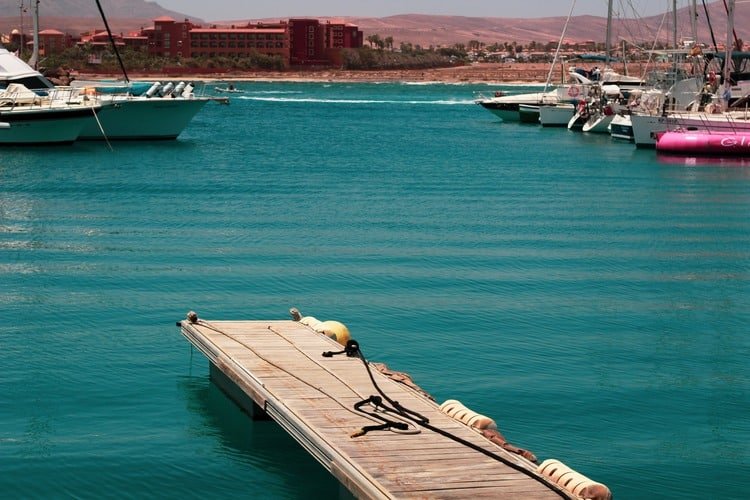
The enchanting Port Lincoln on the southern tip of the Eyre Peninsula of South Australia is famous for diving with great white sharks.
Neptune Islands is the only place in Australia where you can get so close to this largest predator. One of the Australian highlights.
Have you ever thought about whether you would like to be face-to-face with great white sharks? Protected in a cage or dry in a glass aqua-sub to get close to these unjustly disreputable, beautiful creatures of the sea.
In Port Lincoln, three operators have diving with great white sharks in their program.
There is Rodney Fox, who offers boat tours of several days with dives and cage diving. However, the 3-4 day liveaboard costs around $2,000 – $3,000. In contrast to the other two providers, the cages are left on the seafloor, which requires a diving license.
The other providers for day trips are Calypso Star and Adventure Bay Charters. Compared to Rodney Fox expeditions you don’t need a diving license for these trips.
Key statistics to diving with Great White Sharks in Port Lincoln, Australia:
| Best Time | All year round |
| Water Temperature | 10 – 25°C / 55 – 77°F |
| Visibility | Usually 30+ metres |
| No Diving Qualification is needed (just for Rodney Fox) | Higher than 70% |
| Qualification | No Diving Qualification needed (just for Rodney Fox) |
Best Great White Shark Diving Operator in Port Lincoln
Multiple diving schools are offering great white shark cage diving. Here are the most reliable ones (Rated on Google Maps and Trip Advisor):
2. Guadalupe, Mexico
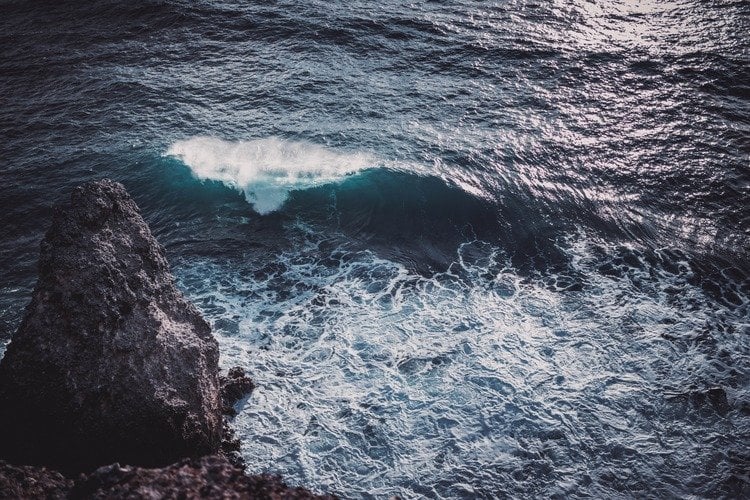
Note: Great White Cage diving hot spot has been permanently closed to tourism on the coast of Guadalupe.
We have included this spot for interest but unfortunately, it is no longer possible to dive here.
This is unfortunate because for many of us when we think of diving with great white sharks, we think – at least in the Pacific – of the top spot: Guadalupe Island off the coast of Mexico.
From San Diego, you used to need only a one-day boat ride to Guadeloupe. The island was populated by colonists with goats, who destroyed all the vegetation, which is why it is now bare and protected.
Its beaches are inhabited by different kinds of seals, which are hunted by the great white sharks, which is why you will meet more great white sharks near Guadeloupe than in South Africa. Up to 150 great white sharks are said to live near the island.
Guadalupe Island it was technically forbidden to cheat or bait sharks. However, law enforcement at this remote location was lax and many operators lured sharks with food, this is one of the reasons that the government had to step in a stop Shark Cage diving.
Read more about this in our Article: Shark Cage Diving: A Dinking Industry?
3. Bluff, New Zealand
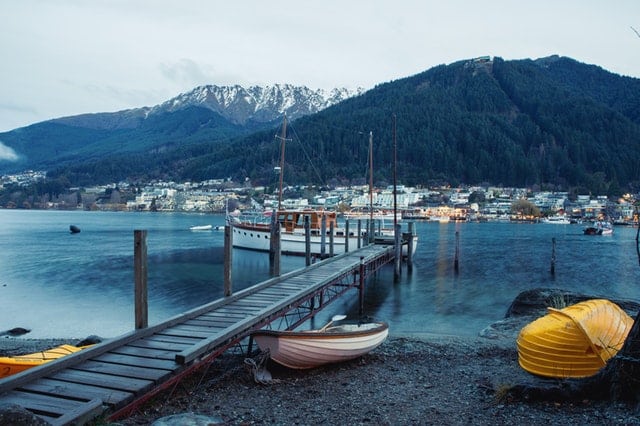
Note: Great White Cage diving hot spot has been permanently closed to tourism in Bluff, New Zealand.
Bluff is situated on a small peninsula about 20 km south of the center of Invercargill. The peninsula, on which the 265 m high mountain The Bluff rises, closes Bluff Harbour, a natural harbour, with the very flat peninsula opposite.
Bluff itself faces the natural harbor and covers the northern part of the peninsula. The most eastern point of the place is Stirling Point, which is located at the eastern tip of the peninsula and where the beacon for the harbor entrance is located.
There are male great white sharks all year round. During the mating season, the females come. However, there were several incidents when tourists reported that they saw no sharks during their trip to Bluff, New Zealand.
This lack of sight might have been one of the reasons why Shark Cage diving is no longer permitted.
With this being our second location on this list that no longer practices Shark Cage diving it raises many questions about Shark Cage diving and whether the industry will be around for much longer.
4. Gansbaai, South Africa
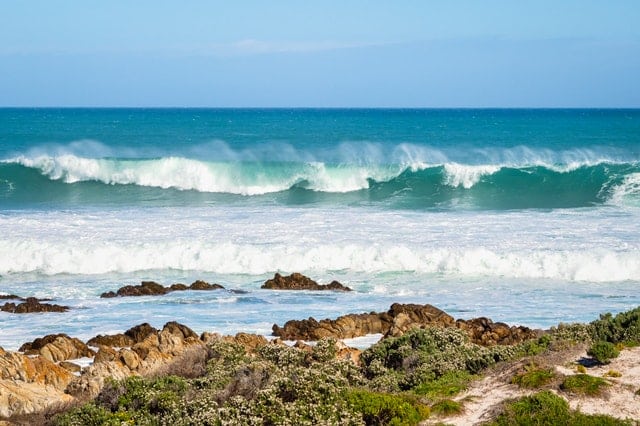
There are three places in South Africa where you can do cage diving. The first and most famous place is Gansbaai, a small town located 165 kilometers southeast of Cape Town.
Gansbaai near Cape Town in South Africa offers shark diving between the Indian & Atlantic Oceans where dives can be combined with shark tours. Just as the lion dominates the savannah of Africa, the Great White Shark is the king of all predators in our oceans.
Only he is mercilessly hunted and misunderstood by man, unlike the lion. The shark territory is off the coast of Cape Town, where he has his nursery. It is his territory and man kills him because he is understood as a monster fish.
There are only 2 coastal places in the world where you can dive with the cage and make acquaintance with the biggest predator of all seas. One of them is the small village of Gansbaai in the Overberg region of South Africa, where you can make a first-class shark observation about 12 km from the coast.
Only 2 hours drive from Cape Town, your great adventure can begin with a dive to meet the White Shark. An encounter that you will never forget for the rest of your life.
From here it is only a short boat trip to Dyer Island, which is known for one of the world’s largest populations of great white sharks. The road between the island and nearby Geyser Rock is called Shark Alley and this is where these legendary National Geographic images are taken, depicting the “great white shark jumping out of the water”.
Gansbaai is also only 30 minutes away from Hermanus, the capital of whale watching in South Africa.
Key statistics to diving with Great White Sharks in Gansbaai, South Africa:
| Best Time | Beginning of March to September |
| Water Temperature | 16 – 23°C / 61 – 73°F |
| Visibility | Usually 5+ metres |
| Chance to encounterblue sharks | Higher than 90% |
| Qualification | No Diving Qualification needed |
Best Great White Shark Diving Operator in Gansbaai
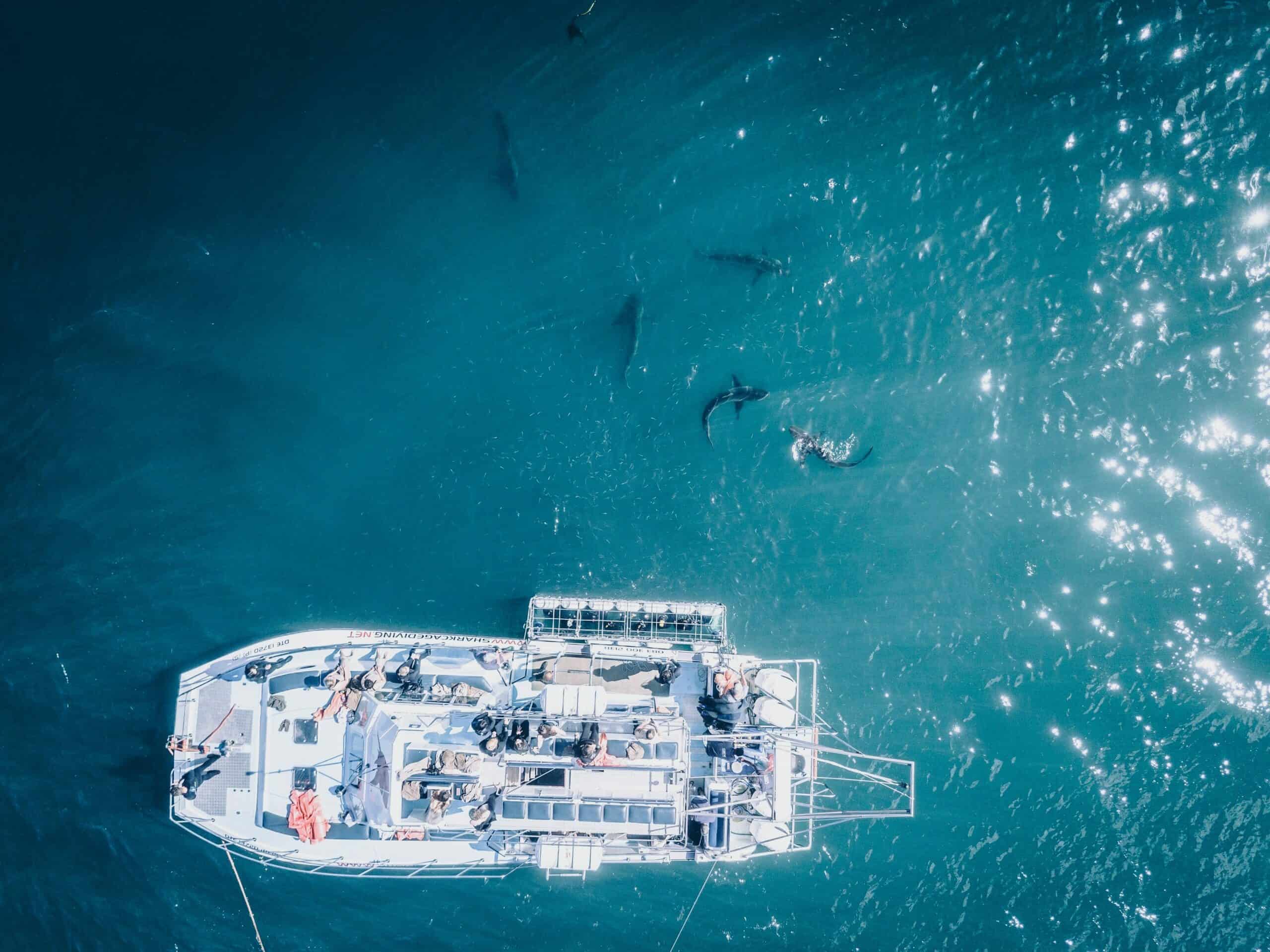
Multiple diving schools are offering great white shark cage diving. Here are the most reliable ones (Rated on Google Maps and Trip Advisor):
- White Shark Diving Company
- White Shark Ventures
- White Shark Projects
- Shark Lady
- Shark Diving Unlimited
If you are interested in doing more research on Great white shark encounters in Cape Town, South Africa, take a look at the Shark and Marine Research Institute. This institute is directly affiliated with the top-rated shark tour operator in Gansbaai, The White Shark Diving Company. They offer educational expeditions and even opportunities to volunteer in conservation efforts!
5. Mossel Bay, South Africa
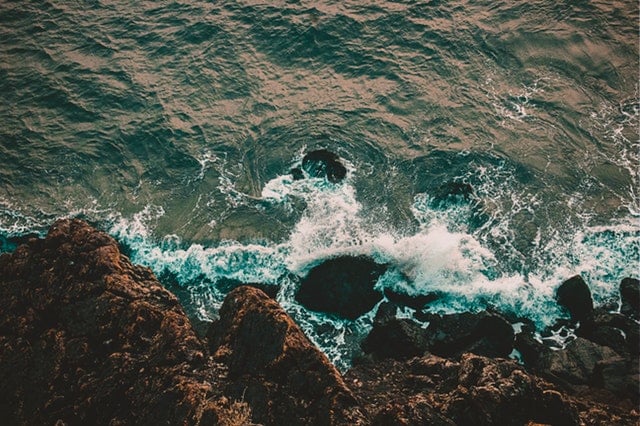
Mossel Bay is a small town by the sea, which lies directly on the Garden Route. It is famous for its great white sharks and an alternative, yet not so famous as Gansbaai.
Since the water temperature here is higher than at other locations, the place is known worldwide for the largest occurrence of great white sharks along the South African coast!
You will find the great white shark in Mossel Bay and many other species of sharks and rays that have found a new home in this area.
Of course, many other species of animals, such as dolphins or whales, can also be seen at certain times of the year.
Key statistics to diving with Great White Sharks in Mossel Bay, South Africa:
| Best Time | Beginning of May to September |
| Water Temperature | 16 – 23°C / 61 – 73°F |
| Visibility | Usually 5+ metres |
| Chance to encounter blue sharks | Higher than 90% |
| Qualification | No Diving Qualification needed |
Best Great White Shark Diving Operator in Mossel Bay
Multiple diving schools are offering great white shark cage diving. Here are the most reliable ones (Rated on Google Maps and Trip Advisor):
6. False Bay, South Africa
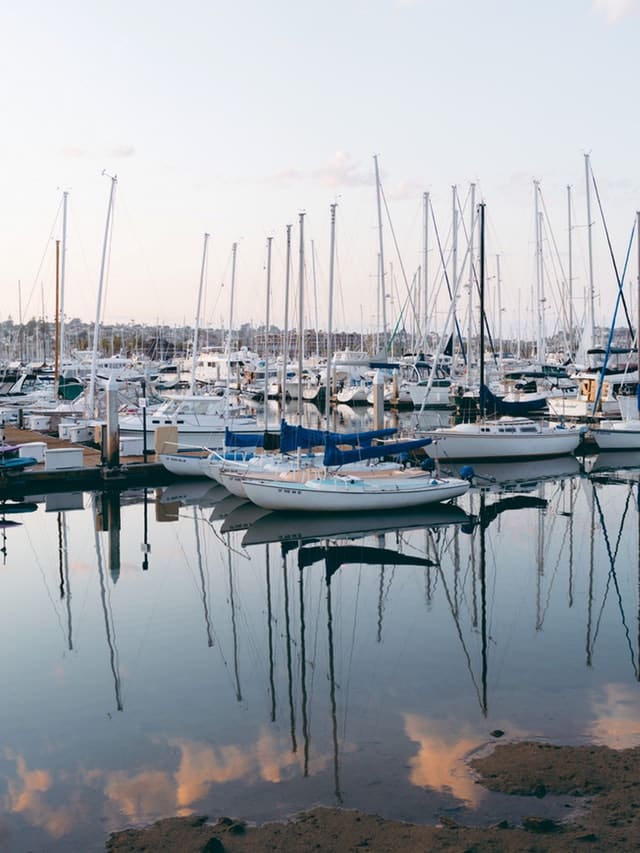
To the east of the Cape of Good Hope the False Bay. The bay got its name in sailing times because of its sheer size when sailing ships already confused False Bay with the Atlantic Ocean, but they only reached it after sailing around the Cape of Good Hope.
Close to Seal Island, a small island in the middle of the bay, which serves as a resting place for seals, the great white sharks are especially fond of making their tracks. The animals are a preferred hunting ground for the sharks, which is why they are in large numbers in these waters.
Adventurous people can test their courage here and undertake Shark Cage Diving tours with various providers and get particularly close to the Great White Sharks, protected only by a cage.
Key statistics to diving with Great White Sharks in False Bay, South Africa:
| Best Time | Beginning of May to September |
| Water Temperature | 17 – 22°C / 60 – 71°F |
| Visibility | Usually 5+ metres |
| Chance to encounter blue sharks | Higher than 90% |
| Qualification | No Diving Qualification needed |
Best Great White Shark Diving Operator in False Bay
Multiple diving schools are offering great white shark cage diving. Here are the most reliable ones (Rated on Google Maps and Trip Advisor):
Looking for an authentic, educational experience?
CapeRADD operates as a center for marine-biodiversity-related research, offering SCUBA diving, free-diving and marine fieldwork courses as well as educational and recreational expeditions throughout the Cape False Bay of the Southern Peninsula, Cape Town. Their team consists of passionate ocean experts and conservation enthusiasts. If you’re looking to learn more about the marine biodiversity in the Cape, want to embark on an expedition to witness the marine big 5, or take up an exciting course that contributes to important research, take a look at everything CapeRADD has to offer:
Explore Simon’s town:
South of Simon’s Town is Boulder’s Beach, so called because of the huge granite rocks scattered over the sandy beach. Spectacled penguins have lived here since 1985 in one of only three penguin mainland colonies in South Africa.
Best Great White Shark Diving Operator in Simon’s Town
Multiple diving schools are offering great white shark cage diving. Here are the most reliable ones (Rated on Google Maps and Trip Advisor):
7. Farallon Islands, USA
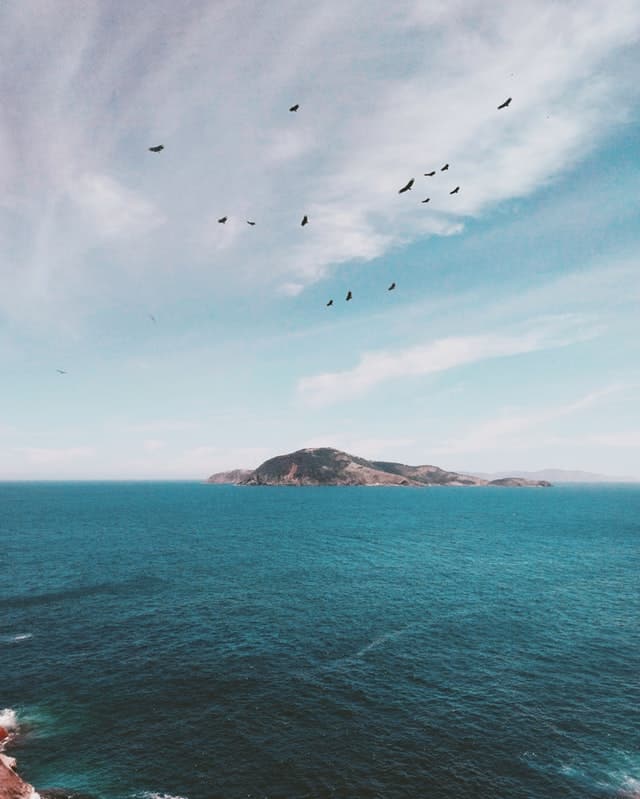
The boat trip from San Francisco to the Farallon Islands takes two hours. In autumn, the Farallon Islands are home to an abundance of great white sharks.
The Farallon Islands are a group of rugged volcanic islands and rocks in the Gulf of the Farallones, off the coast of San Francisco.
They are located 43 km west of the Golden Gate and 32 km south of Point Reyes. Administratively, they belong to the San Francisco metropolitan area.
Key statistics to diving with Great White Sharks in Farallon Islands, USA:
| Best Time | Beginning of September to November |
| Water Temperature | 13 – 17°C / 55 – 63°F |
| Visibility | Usually 10+ metres |
| Chance to encounter blue sharks | Higher than 70% |
| Qualification | No Diving Qualification needed |
Best Great White Shark Diving Operator in Farallon Islands
Multiple diving schools are offering great white shark cage diving. Here are the most reliable ones (Rated on Google Maps and Trip Advisor):
- Great White Adventures
- Incredible Adventures
- Shark Dive Adventures
- Dive Discovery
8. Cape Cod, USA
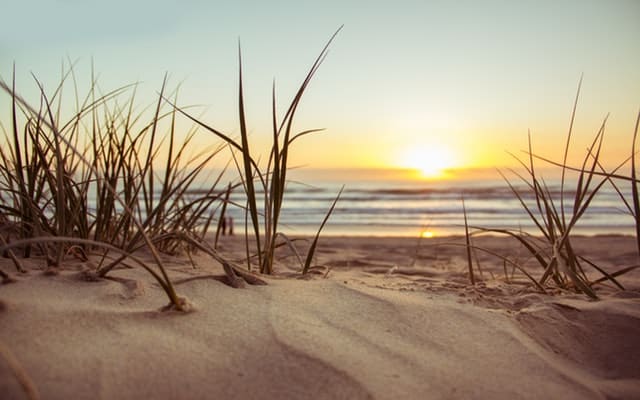
White sharks cavort off the east coast of the USA. The predators of the seas make the picturesque Cape Cod peninsula a magnet for creepy tourists.
Cape Cod – 44 years ago Steven Spielberg’s cult classic “Jaws” – The movie conquered the cinemas. The horror film is set on Cape Cod.
At that time there were no great white sharks in the waters off the picturesque peninsula in the southeast of the US state of Massachusetts.
But that has changed in the meantime. Cape Cod has become the “shark hotspot” of the USA.
Key statistics to diving with Great White Sharks in Cape Cod, USA:
| Best Time | Beginning of July to mid-October |
| Water Temperature | 6 – 20°C / 41 – 67°F |
| Visibility | Usually 30+ metres |
| Chance to encounter blue sharks | Higher than 90% |
| Qualification | No Diving Qualification needed |
Best Great White Shark Diving Operator in Cape Cod
Multiple diving schools are offering great white shark cage diving. Here are the most reliable ones (Rated on Google Maps and Trip Advisor):
Get to Know Great White Sharks
Cloaked in mystery and fear, the great white shark slices through the ocean depths, a predator painted as a monster. Yet, beneath the jagged teeth and fearsome reputation lies a story far richer, a tale of resilience, adaptation, and misunderstood complexities.
Scientists whisper theories of intricate mating rituals, where gentle bites on pectoral fins pave the way for life’s continuation. Females, pregnant giants, embark on solitary voyages, their two-year journeys echoing the 18-month lullaby of gestation within.
More than just a toothy terror, the great white’s scientific name, Carcharodon carcharias, sings of its serrated symphony – rows of triangular blades in the upper jaw, met by the sharper chorus below, a perfect harmony for gripping and tearing. But to focus solely on this predatory prowess is to miss the maestro’s intricate score.
Recent whispers challenge the myth of mindless hunger, suggesting cunning minds and selective prey. Cage diving, a dance between humans and giants, reveals a different waltz, one of awe and respect, a testament to the creature’s captivating nature.
Unlike our slumber, the shark’s rest is a hushed mystery, a tonic immobility where awareness dims but life persists. Scientists grapple with the purpose of this enigmatic pause, a glimpse into the secrets the great white holds close.
The ocean’s vastness, however, is not a cage of steel and concrete. Tragic attempts to confine these magnificent creatures in aquariums, fueled by insatiable curiosity and greed, stand as a stark reminder of our ethical responsibility.
Great white sharks, threads woven into the tapestry of the ocean, face the looming threat of human intervention. Overfishing, accidental capture, and habitat destruction paint a grim picture, a reminder of the delicate balance we must strive to protect.
So let us move beyond the fear and the sensationalized stories. Let us listen to the whispers of science, the secrets of the deep, and the echoes of a creature far more than just a bite. For in understanding the great white, we may find a path to coexist, to dance with these giants in their watery waltz, and ensure their continued reign in the ocean’s symphony.
How do Great White sharks engage in mating?
Scientifically known as Carcharodon carcharias, Great White sharks belong to the mackerel shark family. The Latin name, Charcharodon charcharias, translates to “jagged tooth,” highlighting the impressive dental structure of these predators. Their upper jaws feature several rows of wide, triangular incisors, while the lower jaws are sharper, making them adept at gripping prey.
Contrary to their perceived ferocity, recent scientific findings challenge the notion of Great White sharks as relentless monsters. In fact, contemporary interactions include people swimming with these sharks without the confines of a cage.
Do great white sharks sleep?
Sharks go into little-understood rest periods.
Great white sharks in captivity?
The 1970s witnessed a surge in public fascination with great white sharks, leading to their inclusion in major aquariums like Sea World. However, these efforts faced limitations in providing the vast open water and dynamic ecosystems these apex predators require. As scientific knowledge of their needs evolved, the focus shifted towards protecting their wild populations and appreciating their role in the marine environment
Endangerment of Great White Sharks
Even though the great white shark holds the title of “most protected shark species,” its vulnerability remains alarming. Despite legal safeguards, the IUCN Red List classifies it as “vulnerable” – a stark reminder that conservation efforts must be vigilant and ongoing.
From the 1950s onwards, the Great White Shark became a coveted prize for sport fishermen in Australia and the northeastern USA, fueled by a growing fascination with these apex predators

The biggest great white shark ever caught on camera is called “Deep Blue” and was filmed by Ocean Ramsey and Juan Sharks in Hawaii in 2018. You can read all about “Deep Blue” in another one of our articles.
The great white shark’s rarity excludes it from the targets of large commercial fisheries, but its presence in their nets as bycatch has been a persistent concern
The Great White Shark faces significant challenges in the Mediterranean Sea, mainly due to habitat alterations. The populations in this region are impacted by water pollution and the depletion of tuna stocks.
Habitat and distribution of Great White Sharks
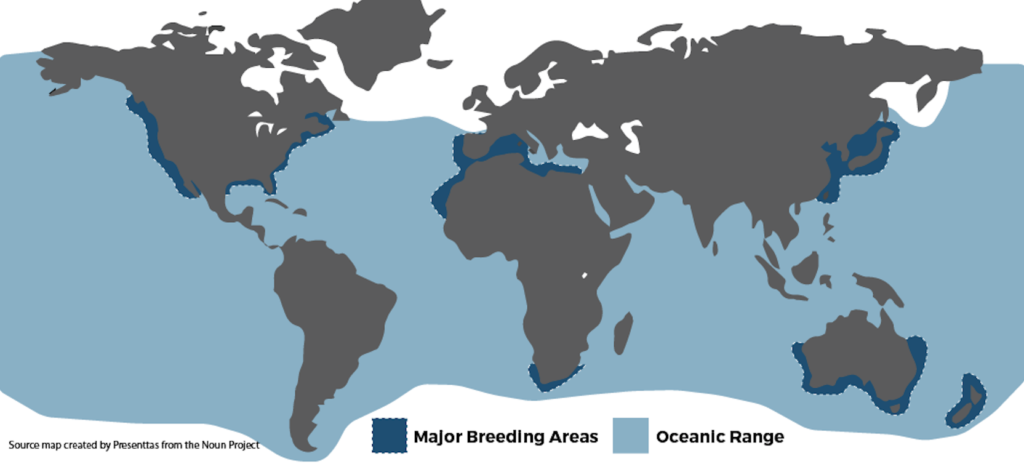
From temperate shores to tropical depths, the great white shark is a global nomad. Their preferred hunting grounds are near seal colonies, but their journeys are far more expansive than ever imagined. Satellite tracking since the millennium has revealed migrations spanning five months, 11,000 kilometers, and depths of 1,000 meters. Genetic studies further suggest these incredible journeys, particularly for males, are crucial for maintaining gene flow within populations across continents.
A team of researchers and scientists traced the great white shark’s journey from Nova Scotia to the Gulf Coast of Louisiana. While Mexico has historically been a hotspot for shark watching, the government recently imposed a ban on Shark Cage diving.
When it comes to tracking great white sharks, tagging plays a crucial role. Even if a shark remains unseen for years, the original data is retained for future reference when the shark is eventually recaptured.
Great White Shark attacks
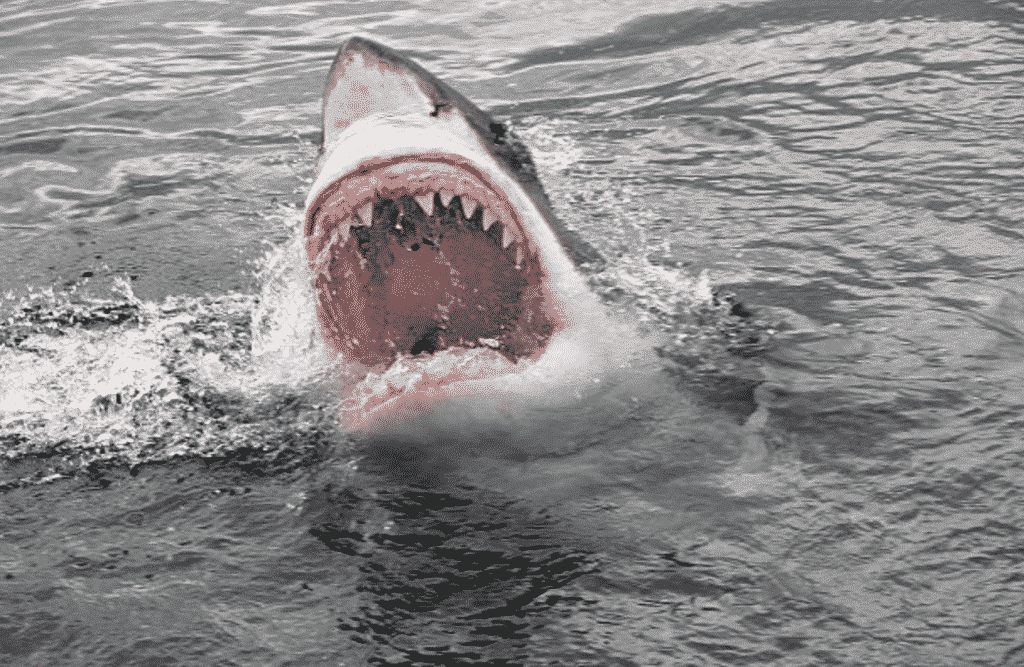
While shark attacks grab headlines, they’re surprisingly rare. But some beaches seem to hold a magnetic pull for these apex predators. Why? And are attacks on the rise?
Data from the International Shark Attack File and the Global Shark Attack File tell a complex story. In 1846, a staggering 447 fatal attacks and 2,320 non-fatal encounters were documented worldwide. Fast forward to 2019, and the numbers dip, with 101 incidents reported – a slight increase from 66 the year before.
The top three suspects? Bull sharks, great whites, and tiger sharks, according to Travel and Leisure. But here’s a twist: the notorious great white, often blamed for attacks, might be getting a bad rap.
Great white sharks spend most of their time in the open ocean,” explains Marie Levine, Shark Research Institute director, “while bull sharks, known for their aggression, favor river deltas and can venture up to 90 kilometers inland.” So, the culprit in shallows close to shore might be the bull shark, not the unfairly maligned great white.
Unraveling the mystery behind shark attacks requires looking beyond sensational headlines. Understanding habitat preferences, migration patterns, and even misidentification are crucial pieces of the puzzle. Only then can we truly appreciate the delicate balance between humans and these powerful predators.
Great white sharks spend most of their time in the open ocean
Marie Levine
Bull sharks, on the other hand, are found in river deltas and approach up to about 90 kilometers from the coast.
Unlike the more targeted attacks of some other shark species, tiger shark encounters often stem from their insatiable urge to learn about their surroundings, sometimes with unintentional consequences.
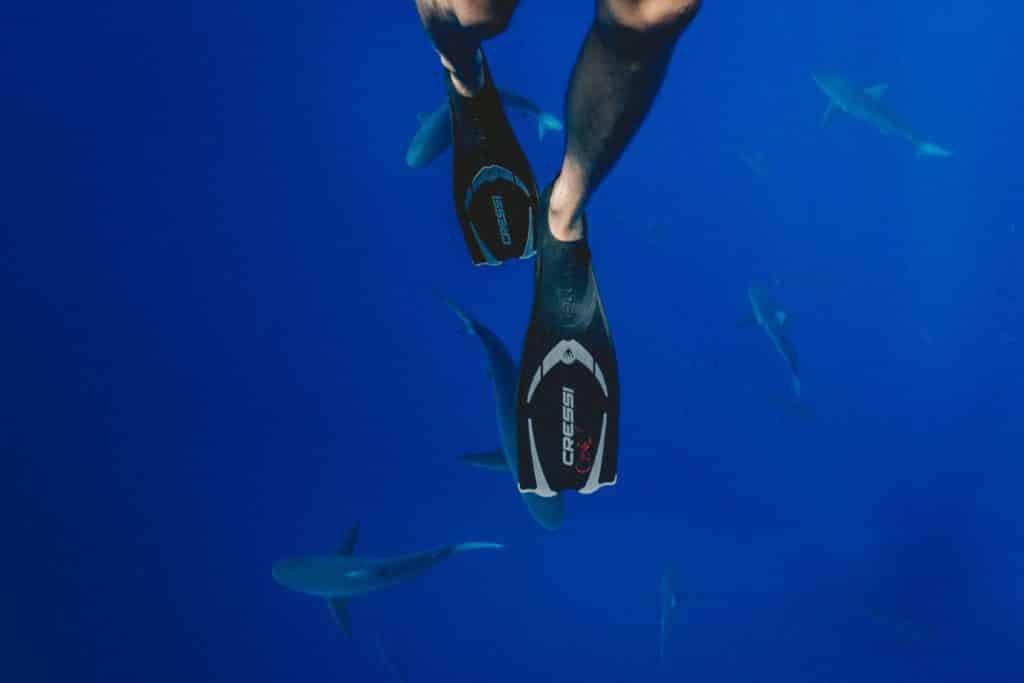
But why do sharks attack humans?
Option 1: The shark’s confusion arises as it mistakes surfers for seals, its favored prey. This is evident from the shark’s tendency to release humans swiftly after the initial bite. However, given their heightened senses, sharks should theoretically discern the identity of swimmers long before an attack occurs. Perhaps their actions are driven by curiosity, prompting them to explore with a tentative bite.
Option 2: Unintentionally, a swimmer may provoke a shark. When too close, certain sharks, like the Grey Reef Shark, express their discomfort through threatening gestures. This includes head and tail shaking, erecting pectoral fins, creating a hump, and executing spirals or figure-eight patterns. Unfortunately, those unaware of this underwater dance may find themselves in an unfavorable situation.
Option 3: In some cases, a shark may act defensively, perceiving intruders as a threat to its territory.
Great White Sharks in Captivity
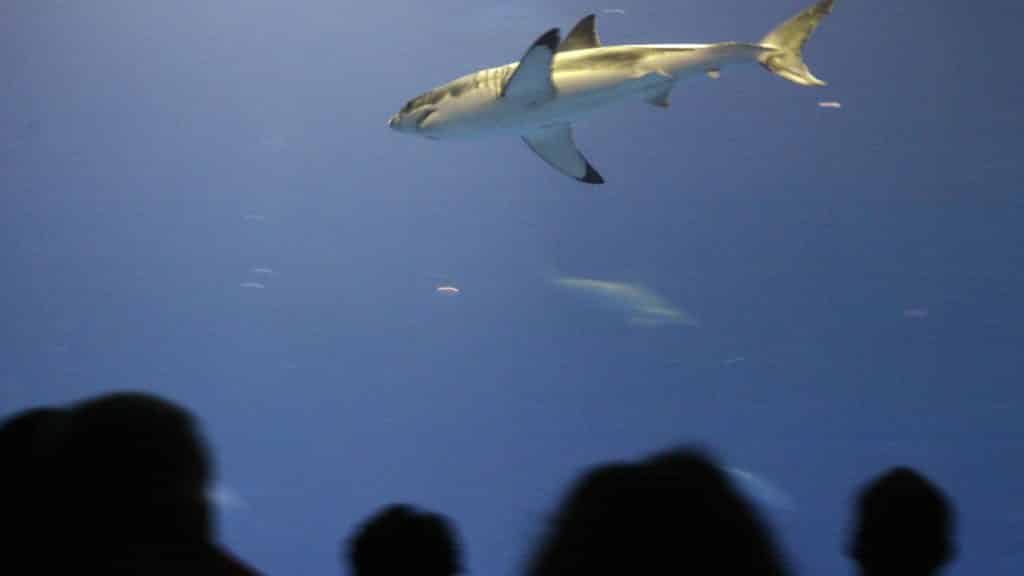
Aquariums showcase a mesmerizing array of marine life, featuring colorful fish, vibrant plants, turtles, and even sharks, creating an immersive underwater experience for visitors.
Yet, conspicuously absent from aquariums worldwide is one notable species: the great white shark. Why is that? Is the great white shark deemed too large for aquariums due to its sheer size?
With an average length of around four meters, the great white shark stands among the largest shark species, with some individuals reaching an impressive seven meters in length. However, size alone is not the determining factor, as orcas, exceeding nine meters, are still confined in captivity globally for use in animal shows.
While a great white shark would undoubtedly attract crowds, attempts to maintain them in aquariums have consistently proven unsuccessful. A poignant example occurred last year at the Okinawa Churaumi Aquarium in Japan, where a great white shark perished after a mere three days in captivity.
You can read more about why no Aquarium has Great white sharks with our dedicated article.
Summary of Best Places to See Great White Shark
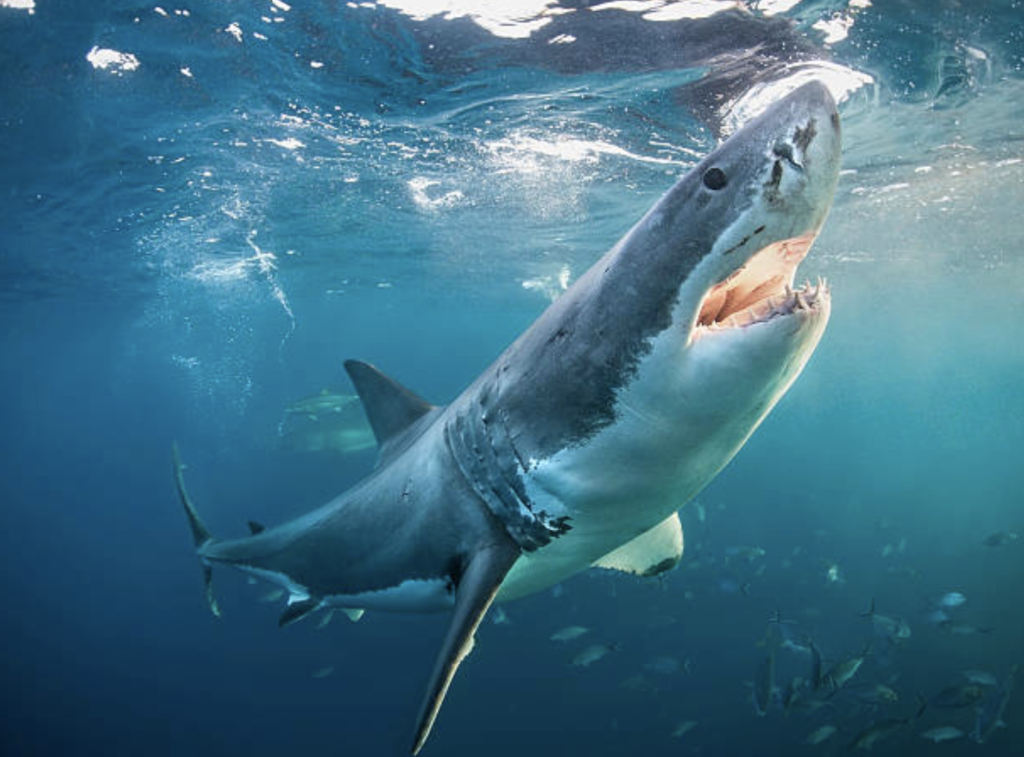
In summary, it can be said that great white sharks are wonderful animals that have an unjustly bad image in large parts of society. The statistics on shark attacks around the world show that attacks are still the exception rather than the rule.
Habitat loss and the constant intrusion of humans into the sharks’ habitat can lead to unfortunate accidents. There are several places in the world that allow you to observe great white sharks at close range without taking any risk.
Read more about Shark Cage Diving: A sinking industry and The Biggest Great White Shark Ever Recorded with our dedicated article.
If you are interested in reading about an even larger shark, in fact, the largest shark in the world, then follow us to our article about the best places to dive with Whale Sharks.
Frequently Asked Questions (FAQs)
Scuba diving with Great White Sharks can be safe when done with experienced and responsible operators who follow safety guidelines. Diving with a cage provides an extra layer of protection. However, as with any wildlife interaction, there are inherent risks, and divers should always follow the instructions of professional guides.
Yes, you can swim with Great White Sharks in South Africa through cage diving tours offered by various diving operators in places like Gansbaai, Mossel Bay, False Bay, and Simon’s Town.
Free diving with Great White Sharks is not recommended due to the potential risks involved. Free diving lacks the protection provided by a cage, making it much more dangerous to be in close proximity to these powerful predators.
Shark attacks on divers are rare because sharks do not typically view humans as prey. They may approach out of curiosity or mistake human splashing for potential prey. When sharks do attack, it is often a case of mistaken identity, and they usually release after the initial bite.
Sharks may show fear or avoidance of dolphins because dolphins are known to be aggressive and protective of their group members. Dolphins have been observed driving sharks away from their territory, which may contribute to sharks’ avoidance of dolphins.
Sharks do not actively seek out humans as prey. Most incidents involving sharks and humans are cases of mistaken identity or curiosity, not predatory attacks. Sharks primarily feed on marine mammals, fish, and other marine creatures, not humans.
- Top 5 Rarest Animals in the World - April 15, 2024
- Mongoose Meets One Of The Deadliest Snakes Alive - April 8, 2024
- Watch: Komodo Dragon Swallows Baby Goat In Seconds - March 28, 2024

